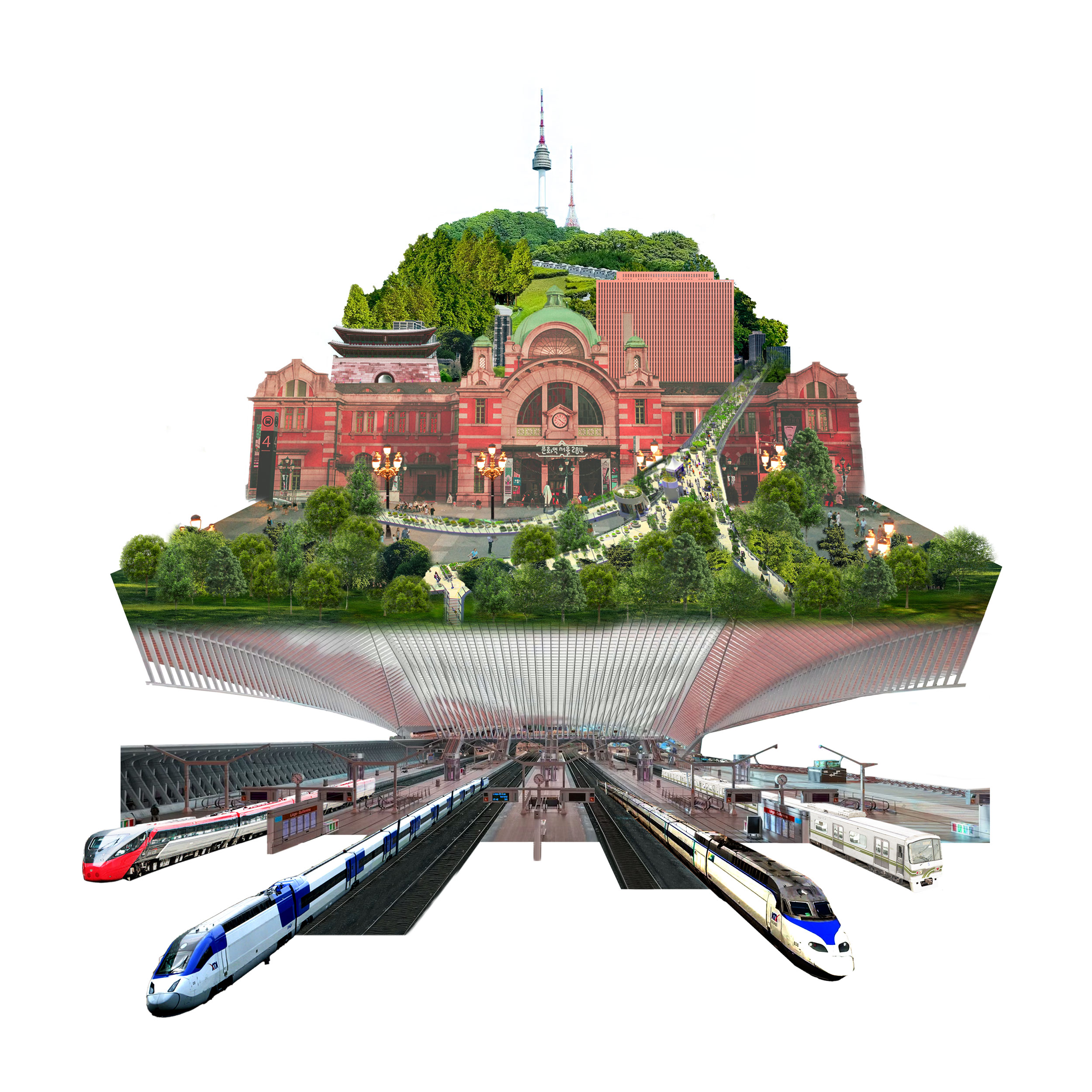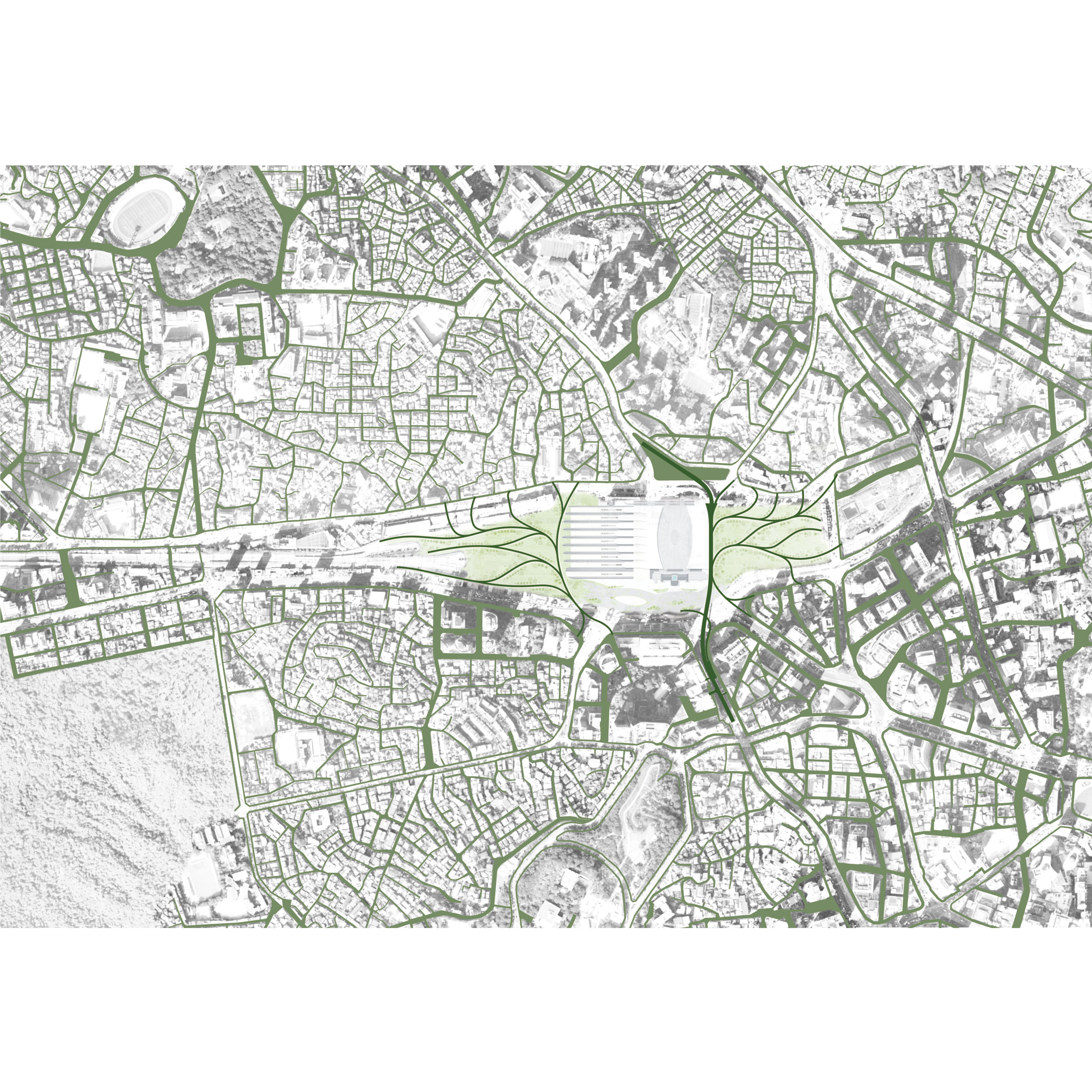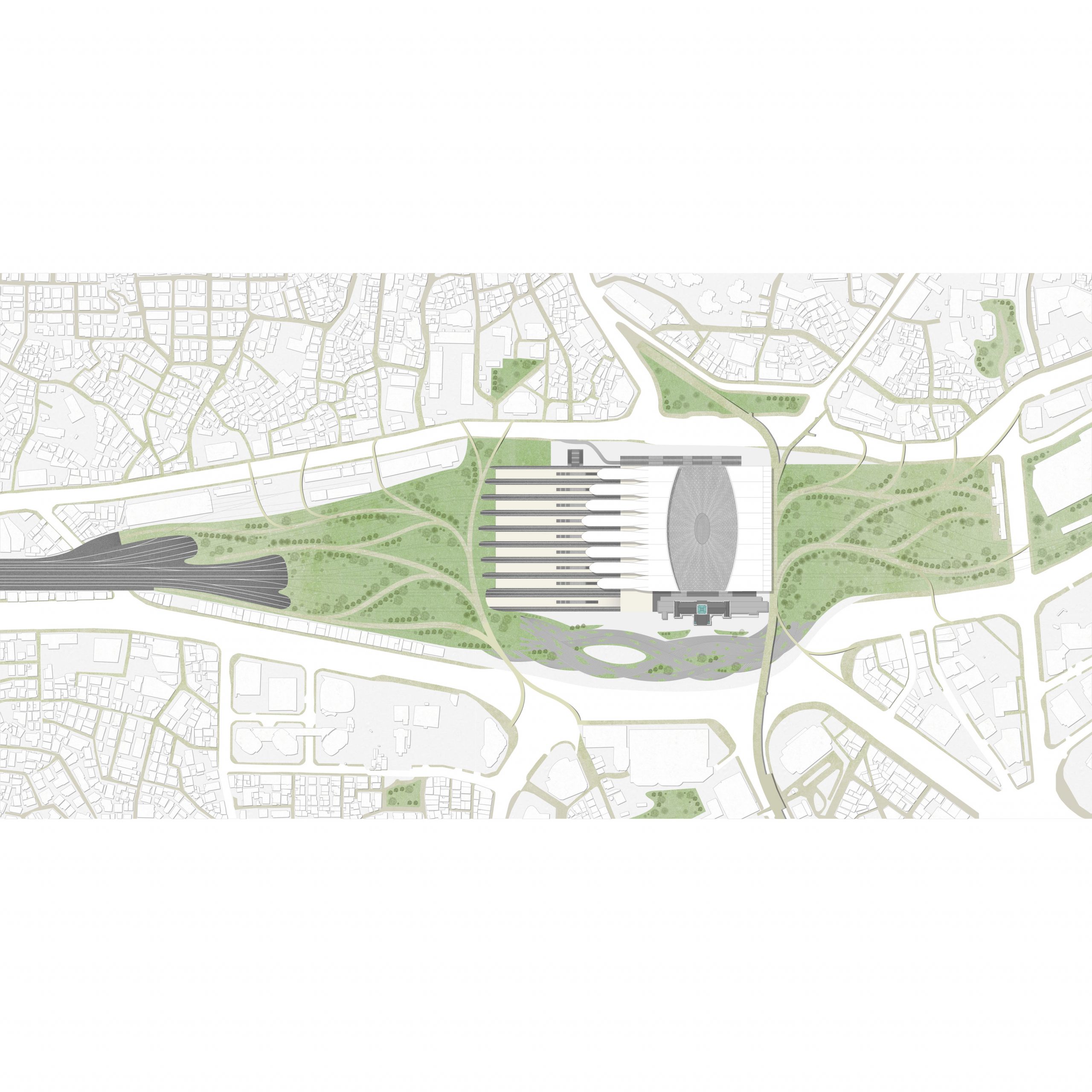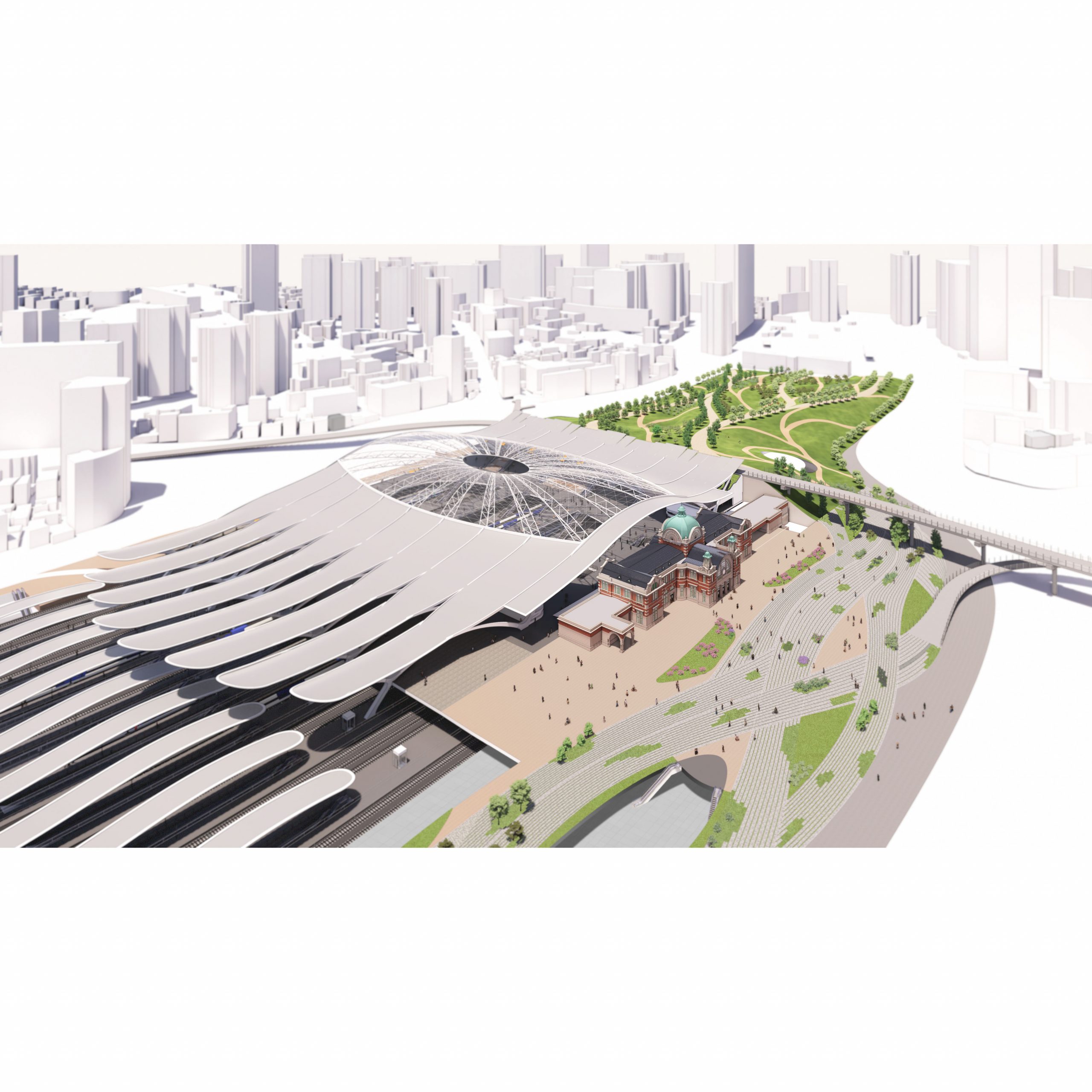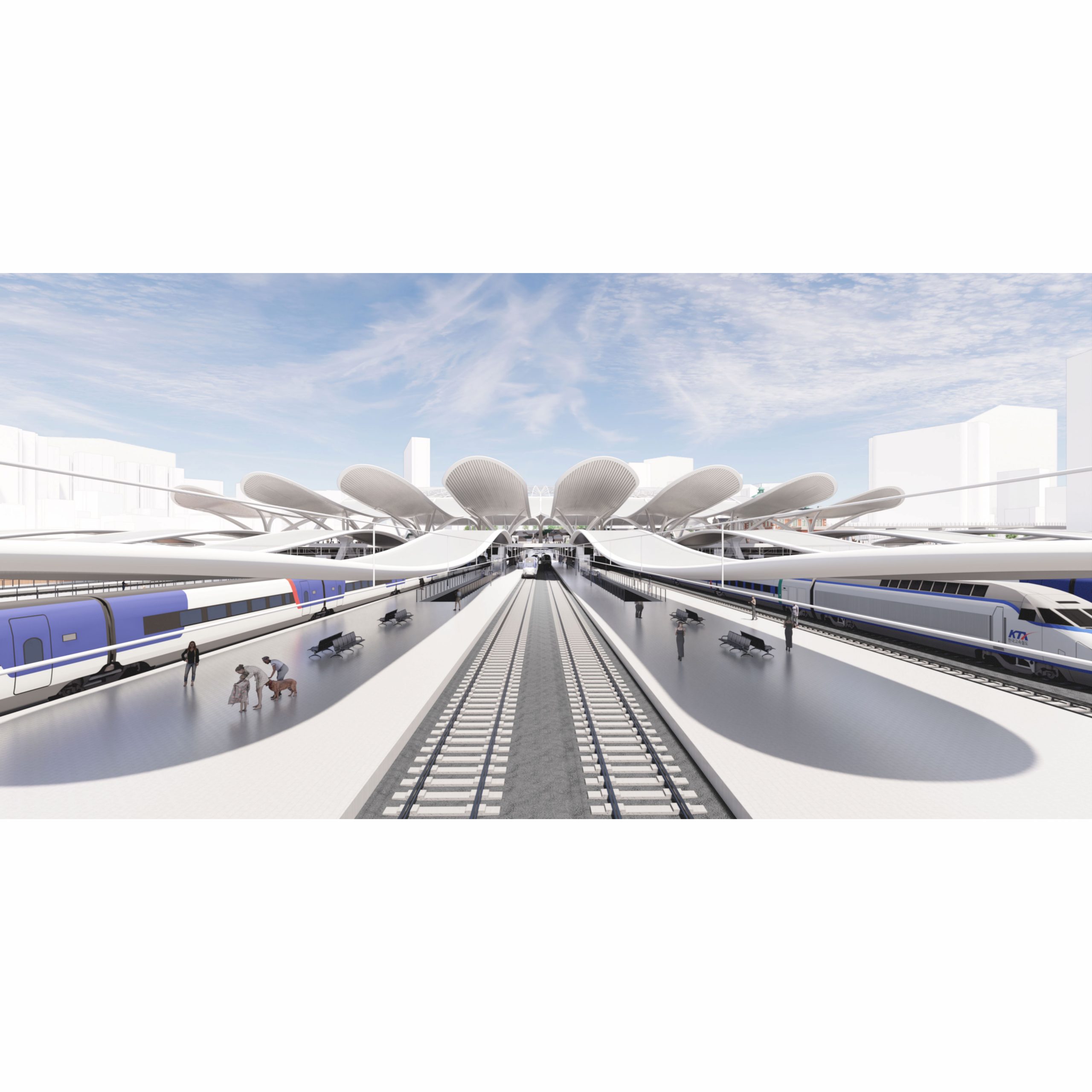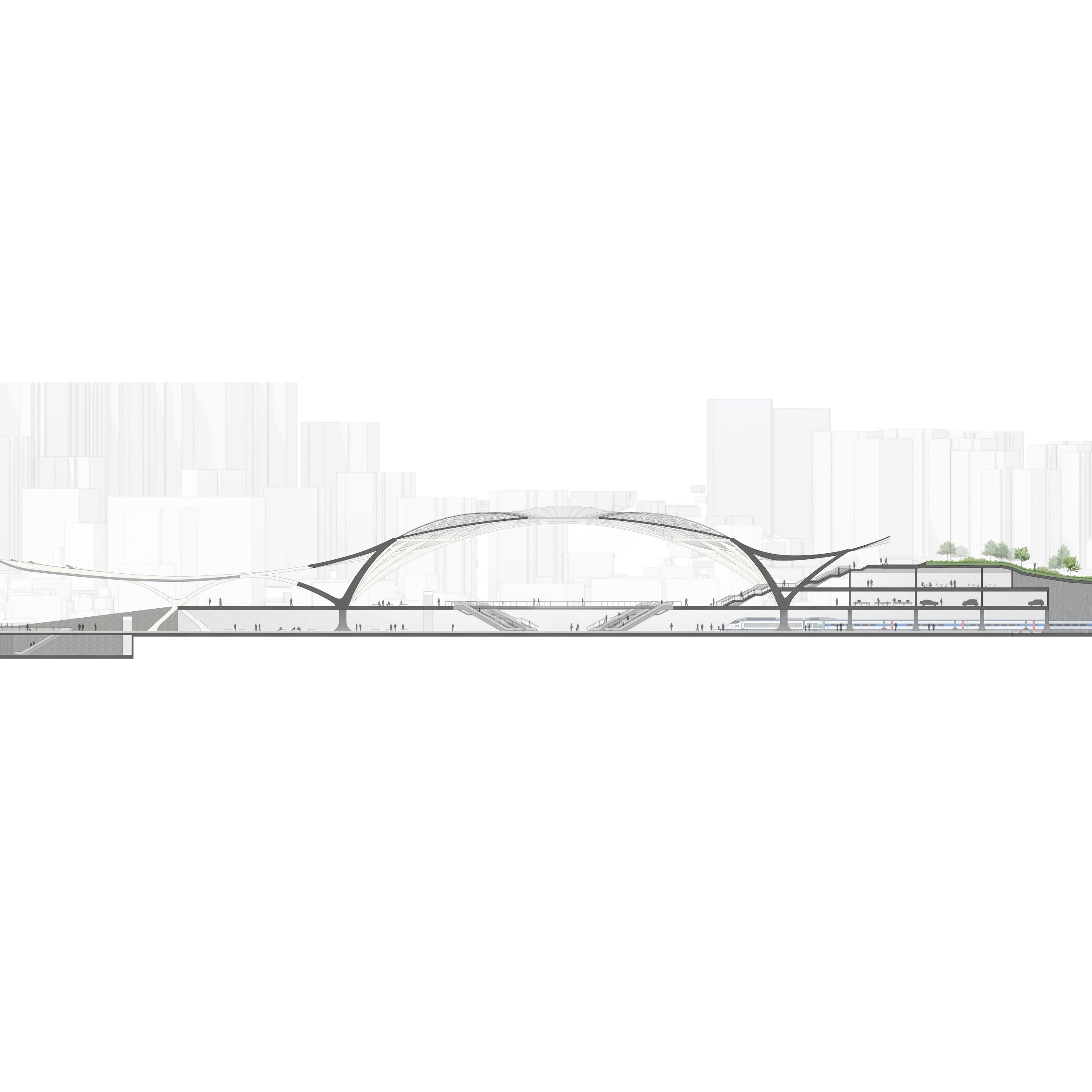한겨레
Gyeore Han
空共公 서울역
Public Plaza & Park, Seoul Station
空共公 서울역은 서울역을 재설계하는 동시에 역사 남북의 철도부지에 인공대지를 구축하고 공원을 조성하는 서울역 일대 마스터플랜이다. 상업 공간으로 점철된 서울역의 공간을 비우고(空) 그 자리에 시민이 들어오며(共) 조성된 공원을 다 함께 누리는(公) 의미이다. 이 마스터플랜은 세 가지 목표를 제시하는데 서울역의 상징성과 공공성 복원, 도심 공원 조성으로 녹지 축 연결, 단절된 보행 네트워크 봉합이다.
구 서울역사는 1925년 준공된 이래로 80여 년간 수도 서울의 관문으로서 오랜 시간 시민과 함께 한 문화유산이다. 그러나 현재는 장소성과 상징성을 잃은 채 단순한 “문화공간”으로 전락된 상황이다. 2004년 통합 민자역사가 개관하면서 구 서울역사는 방치되다시피 하였고, 더욱이 새 민자역사는 구 서울역사에 대한 존중과 활용이 부족하게 설계되었다. 새 민자역사에는 자본 논리에 의해 대규모의 상업 공간이 자리하게 되었고, 시민의 공공 공간은 건물 가장자리에 자리한 채 방문객을 맞이할 뿐이다. 이에 새롭게 서울역을 설계하여 구 서울역사를 다시금 서울의 관문으로서 기능하게 하고, 시민에게 다시 돌려주고자 한다.
또한 서울 도심에는 공원 녹지가 부족하다. 공원은 시민의 휴식과 여가의 장소로 도시에서 중요한 역할을 하나 서울은 1인당 녹지 면적이 적을 뿐더러 다양한 활동과 넓은 휴식 장소를 제공하는 대형 공원이 부족한 상황이다. 주거 지역의 소규모 근린 공원에서는 여가 활동을 영위하기에는 제한적이다. 게다가 서울 강북 도심 지역에는 강남의 여의도공원, 보라매공원과 같은 대형 공원이 없다. 서울역 남북의 넓은 철도 부지는 대형 공원을 조성하기에 적합한 장소인 동시에 공원을 조성하면서 서울의 녹지 축을 연결하면서 도심에 환경적 이익을 가져다 주는 것이 가능하다.
마지막으로 개업 당시의 서울역은 서울의 변두리에 있었으나 시가지가 확장된 지금 역사와 철도 부지는 도심지를 분절하고 있으며, 특히 보행 네트워크의 단절이 초래되었다. 2017년에 서울역 고가도로를 활용한 서울로 7017이 개장하였으나, 저조한 이용률과 떨어지는 접근성으로 철도 동서의 보행 네트워크를 이어 도심을 활성화하겠다는 목표는 달성하기 어려워 보인다. 이에 서울로를 중심으로 보행로를 뻗어 보행 네트워크를 봉합하고, 선형의 고가도로를 면으로 확장하여 공원과 결합하였다.
Public Plaza & Park, Seoul Station is a masterplan for the redesign of Seoul Station, which simultaneously creates an artificial land on the railway site of north and south of Seoul Station and makes a park on it. The masterplan empties commercial spaces that dominate Seoul Station, invites citizens to that empty space and provides a park for everyone to enjoy. With this masterplan, I aim to achieve three objectives: restoring the symbolism and public nature of Seoul Station, connecting green through urban park development, and integrating fragmented pedestrian networks.
As a cultural heritage that has served as the gateway to Seoul for over 80 years since its completion in 1925, the old Seoul Station holds significant historical value. However, it has now transformed into a mere “cultural space,” losing its sense of place and symbolism. Since the opening of the new Seoul Station built by private capital in 2004, the old Seoul Station has been neglected, and the new station has been designed with insufficient respect for and utilization of the old station. The new one is dominated by large-scale commercial spaces driven by capital logic, leaving public spaces for citizens only at the periphery of the building. Therefore, the goal is to redesign Seoul Station, restoring its function as Seoul's gateway and returning it to the citizens.
Furthermore, Seoul lacks green in its city downtown. Parks play a vital role as places of rest and leisure for citizens in urban areas, yet Seoul has a shortage of large-scale parks that provide diverse activities and ample rest areas. Small neighborhood parks in residential areas offer limited opportunities for leisure activities. Moreover, there are no large parks in the northern downtown area of Seoul, comparable to Yeouido Park and Boramae Park in southern Seoul. The expansive railway site of Seoul Station, spanning north and south, provides an ideal location for developing a large park that can also connect green in Seoul, bringing environmental benefits to the city center.
Lastly, when Seoul Station first opened, it was located on the outskirts of Seoul. However, with the expansion of the city district, the station and railway site have fragmented the downtown area, particularly causing disruptions in pedestrian networks. Although the Seoullo 7017, which utilized the Seoul Station overpass, opened in 2017 with the goal of revitalizing the downtown by connecting pedestrian networks of both sides of the railway site, it seems challenging to achieve this objective due to low utilization and decreasing accessibility. Therefore, the plan is to integrate the pedestrian networks by extending pedestrian pathways from Seoullo, and to expand its linear shape to two-dimentional for integrating it with the park.
